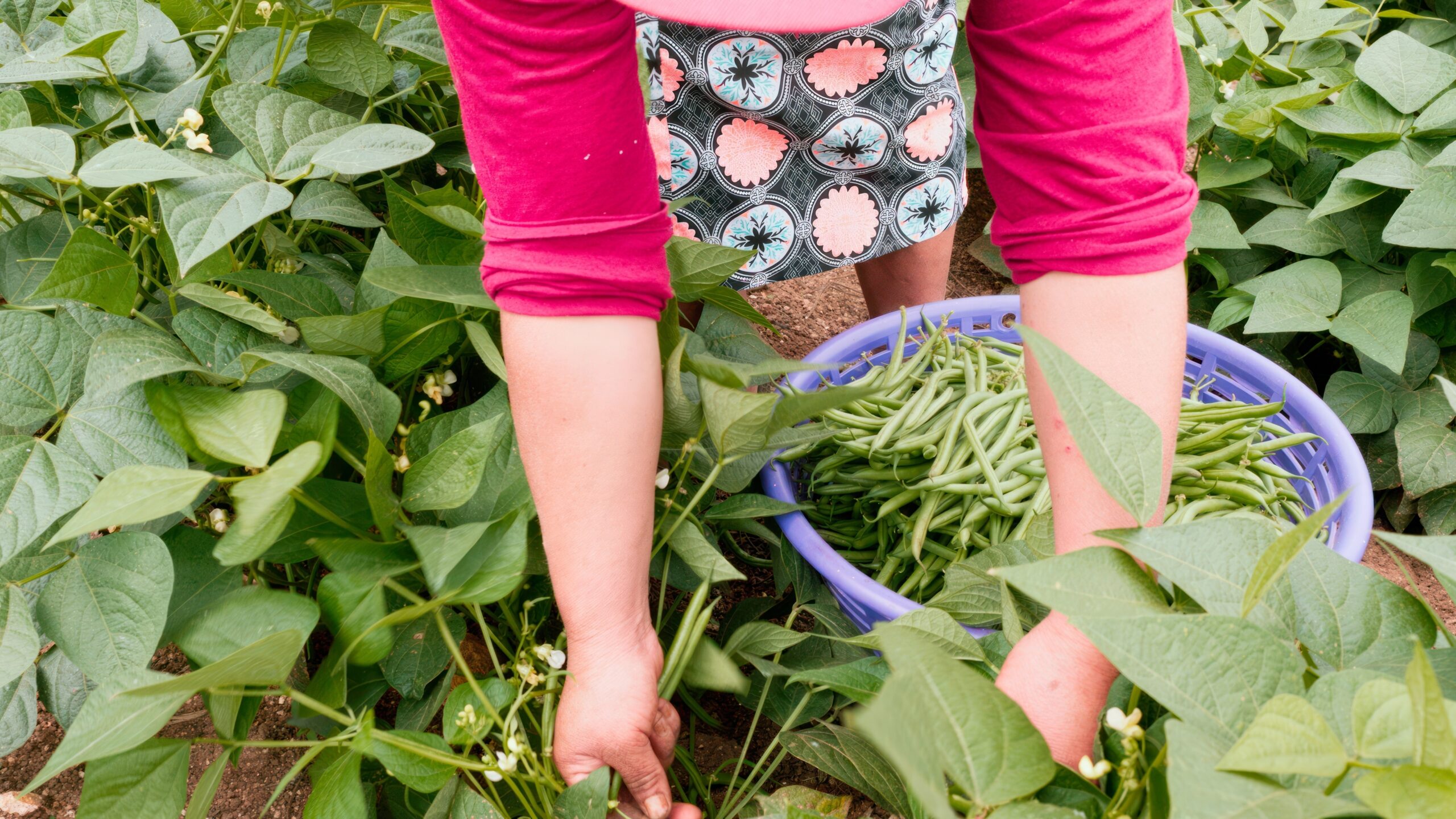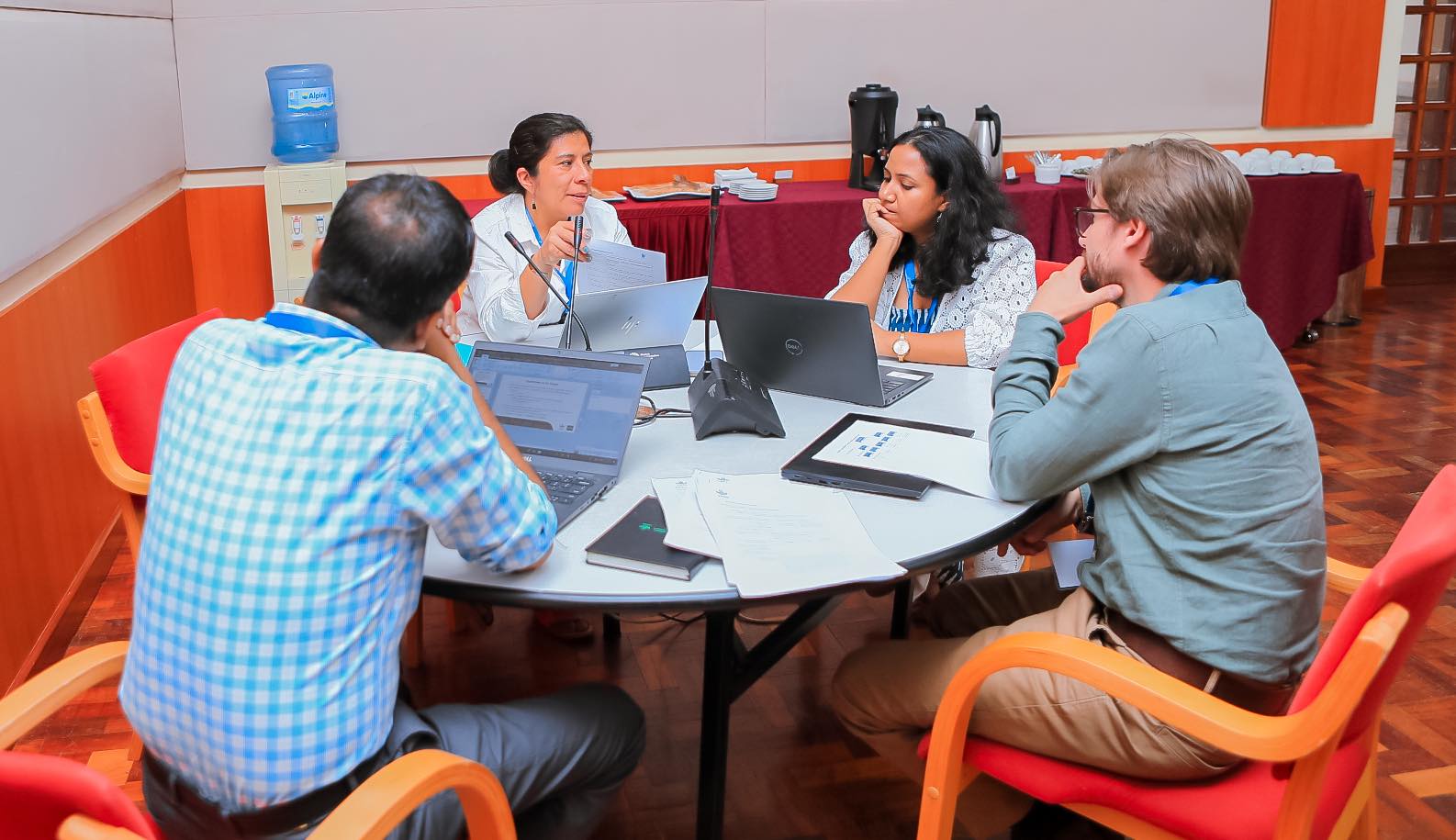IFPRI Policy Brief • April 2008
The sharp increase in food prices over the past couple of years has raised serious concerns about the food and nutrition situation of poor people in developing countries, about inflation, and—in some countries—about civil unrest. Real prices are still below their mid-1970s peak, but they have reached their highest point since that time. Both developing- and developed-country governments have roles to play in bringing prices under control and in helping poor people cope with higher food bills.
In 2007 the food price index calculated by the Food and Agriculture Organization of the United Nations (FAO) rose by nearly 40 percent, compared with 9 percent the year before, and in the first months of 2008 prices again increased drastically. Nearly every agricultural commodity is part of this rising price trend. Since 2000—a year of low prices—the wheat price in the international market has more than tripled and maize prices have more than doubled. The price of rice jumped to unprecedented levels in March 2008. Dairy products, meat, poultry, palm oil, and cassava have also experienced price hikes. When adjusted for inflation and the dollar’s decline (by reporting in euros, for example), food price increases are smaller but still dramatic, with often serious consequences for the purchasing power of the poor.
National governments and international actors are taking various steps to try to minimize the effects of higher international prices for domestic prices and to mitigate impacts on particular groups. Some of these actions are likely to help stabilize and reduce food prices, whereas others may help certain groups at the expense of others or actually make food prices more volatile in the long run and seriously distort trade. What is needed is more effective and coherent action to help the most vulnerable populations cope with the drastic and immediate hikes in their food bills and to help farmers meet the rising demand for agricultural products.
The Sources of Current Price Increases
The combination of new and ongoing forces is driving the world food situation and, in turn, the prices of food commodities. One emerging factor behind rising food prices is the high price of energy. Energy and agricultural prices have become increasingly intertwined (see figure). With oil prices at an all-time high of more than US$100 a barrel and the U.S. government subsidizing farmers to grow crops for energy, U.S. farmers have massively shifted their cultivation toward biofuel feedstocks, especially maize, often at the expense of soybean and wheat cultivation. About 30 percent of U.S. maize production will go into ethanol in 2008 rather than into world food and feed markets. High energy prices have also made agricultural production more expensive by raising the cost of mechanical cultivation, inputs like fertilizers and pesticides, and transportation of inputs and outputs.
At the same time, the growing world population is demanding more and different kinds of food. Rapid economic growth in many developing countries has pushed up consumers’ purchasing power, generated rising demand for food, and shifted food demand away from traditional staples and toward higher-value foods like meat and milk. This dietary shift is leading to increased demand for grains used to feed livestock. Poor weather and speculative capital have also played a role in the rise of food prices. Severe drought in Australia, one of the world’s largest wheat producers, has cut into global wheat production.
The Impacts of High Food Prices
Higher food prices have radically different effects across countries and population groups. At the country level, countries that are net food exporters will benefit from improved terms of trade, although some of them are missing out on this opportunity by banning exports to protect consumers. Net food importers, however, will struggle to meet domestic food demand. Given that almost all countries in Africa are net importers of cereals, they will be hard hit by rising prices. At the household level, surging and volatile food prices hit those who can afford it the least—the poor and food insecure. The few poor households that are net sellers of food will benefit from higher prices, but households that are net buyers of food—which represent the large majority of the world’s poor—will be harmed. Adjustments in the rural economy, which can create new income opportunities, will take time to reach the poor.
The nutrition of the poor is also at risk when they are not shielded from the price rises. Higher food prices lead poor people to limit their food consumption and shift to even less-balanced diets, with harmful effects on health in the short and long run. At the household level, the poor spend about 50 to 60 percent of their overall budget on food. For a five-person household living on US$1 per person per day, a 50 percent increase in food prices removes up to US$1.50 from their US$5 budget, and growing energy costs also add to their adjustment burden.
Policy Responses So Far
Many countries are taking steps to try to minimize the effects of higher prices on their populations. Argentina, Bolivia, Cambodia, China, Egypt, Ethiopia, India, Indonesia, Kazakhstan, Mexico, Morocco, Russia, Thailand, Ukraine, Venezuela, and Vietnam are among those that have taken the easy option of restricting food exports, setting limits on food prices, or both. For example, China has banned rice and maize exports; India has banned milk powder exports; Bolivia has banned the export of soy oil to Chile, Colombia, Cuba, Ecuador, Peru, and Venezuela; and Ethiopia has banned exports of major cereals. Other countries are reducing restrictions on imports: Morocco, for instance, cut tariffs on wheat imports from 130 percent to 2.5 percent; Nigeria cut its rice import tax from 100 percent to just 2.7 percent.
How effective are these responses likely to be? Price controls and changes in import and export policies may begin to address the problems of poor consumers who find that they can no longer afford an adequate diet for a healthy life. But some of these policies are likely to backfire by making the international market smaller and more volatile. Price controls reduce the price that farmers receive for their agricultural products and thus reduce farmers’ incentives to produce more food. Any long-term strategy to stabilize food prices will need to include increased agricultural production, but price controls fail to send farmers a message that encourages them to produce more. In addition, by benefiting all consumers, even those who can afford higher food prices, price controls divert resources toward helping people who do not really need it. Export restrictions and import subsidies have harmful effects on trading partners dependent on imports and also give incorrect incentives to farmers by reducing their potential market size. These national agricultural trade policies undermine the benefits of global integration, as the rich countries’ longstanding trade distortions with regard to developing countries are joined by developing countries’ interventions against each other.
Sound Policy Actions for the Short and Long Term
The increases in food prices have a dominant role in increasing inflation in many countries now. It would be misguided to address these specific inflation causes with general macroeconomic instruments. Mainly, specific policies are needed to deal with the causes and consequences of high food prices. Although the current situation poses policy challenges on several fronts, there are effective and coherent actions that can be taken to help the most vulnerable people in the short term while working to stabilize food prices by increasing agricultural production in the long term.
First, in the short run, developing-country governments should expand social protection programs (that is, safety net programs like food or income transfers and nutrition programs focused on early childhood) for the poorest people—both urban and rural. Some of the poorest people in developing countries are not well connected to markets and thus will feel few effects from rising food prices, but the much higher international prices could mean serious hardship for millions of poor urban consumers and poor rural residents who are net food buyers, when they actually are exposed to them. These people need direct assistance. Some countries, such as India and South Africa, already have social protection programs in place that they can expand to meet new and emerging needs. Countries that do not have such programs in place will not be able to create them rapidly enough to make a difference in the current food price situation. They may feel forced to rely on cruder measures like export bans and import subsidies. Aid donors should expand food-related development aid, including social protection, child nutrition programs, and food aid, where needed.
Second, developed countries should eliminate domestic biofuel subsidies and open their markets to biofuel exporters like Brazil. Biofuel subsidies in the United States and ethanol and biodiesel subsidies in Europe have proven to be misguided policies that have distorted world food markets. Subsidies on biofuel crops also act as an implicit tax on staple foods, on which the poor depend the most. Developed-country farmers should make decisions about what to cultivate based not on subsidies, but on world market prices for various commodities.
Third, the developed countries should also take this opportunity to eliminate agricultural trade barriers. Although some progress has been made in reducing agricultural subsidies and other trade-distorting policies in developed countries, many remain, and poor countries cannot match them. This issue has been politically difficult for developed-country policymakers to address, but the political risks may now be lower than in the past. A level playing field for developing-country farmers will make it more profitable for them to ramp up production in response to higher prices.
Fourth, to achieve long-term agricultural growth, developing-country governments should increase their medium- and long-term investments in agricultural research and extension, rural infrastructure, and market access for small farmers. Rural investments have been sorely neglected in recent decades, and now is the time to reverse this trend. Farmers in many developing countries are operating in an environment of inadequate infrastructure like roads, electricity, and communications; poor soils; lack of storage and processing capacity; and little or no access to agricultural technologies that could increase their profits and improve their livelihoods. Recent unrest over food prices in a number of countries may tempt policymakers to put the interests of urban consumers over those of rural people, including farmers, but this approach would be shortsighted and counterproductive. Given the scale of investment needed, aid donors should also expand development assistance to agriculture, rural services, and science and technology.
Conclusion
World agriculture is facing new challenges that, along with existing forces, pose risks for poor people’s livelihoods and food security. This new situation calls for policy actions in three areas:
- comprehensive social protection and food and nutrition initiatives to meet the short- and medium-term needs of the poor;
- investment in agriculture, particularly in agricultural science and technology and in market access, at a national and global scale to address the long-term problem of boosting supply; and
- trade policy reforms, in which developed countries would revise their biofuel and agricultural trade policies and developing countries would stop the new trade-distorting policies with which they are hurting each other.
In the face of rising food prices, both developing and developed countries have a role to play in creating a world where all people have enough food for a healthy and productive life.







